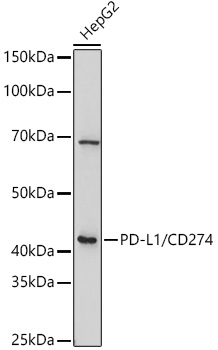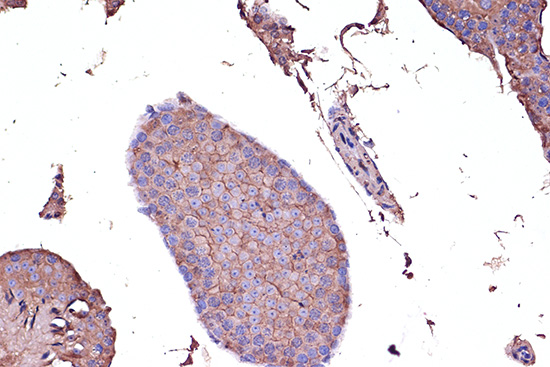PD-L1/CD274 Polyclonal Antibody
For reference only. Please follow the manual included in your kit for instructions.
Catalog Number
Product Name
PD-L1/CD274 Polyclonal Antibody
Catalog Number
RD89401A
Clonality
Polyclonal
Purification Method
Affinity purification
Isotype
IgG
Host
Rabbit
Background
This gene encodes an immune inhibitory receptor ligand that is expressed by hematopoietic and non-hematopoietic cells, such as T cells and B cells and various types of tumor cells. The encoded protein is a type I transmembrane protein that has immunoglobulin V-like and C-like domains. Interaction of this ligand with its receptor inhibits T-cell activation and cytokine production. During infection or inflammation of normal tissue, this interaction is important for preventing autoimmunity by maintaining homeostasis of the immune response. In tumor microenvironments, this interaction provides an immune escape for tumor cells through cytotoxic T-cell inactivation. Expression of this gene in tumor cells is considered to be prognostic in many types of human malignancies, including colon cancer and renal cell carcinoma. Alternative splicing results in multiple transcript variants.
Immunogen Information
Immunogen
Recombinant fusion protein of human PD-L1/CD274
Gene ID
29126
Swissprot
Q9NZQ7
Synonyms
CD274B7-HB7H1PD-L1PDCD1L1PDCD1LG1PDL1CD274 molecule
Calculated MW
119kDa/120kDa/137kDa/152kDa
Observed MW
Refer to figures
Applications
Reactivity
Human,Mouse
Tested Applications
WB,IHC
Conjugation
Unconjugated
Dilution
WB 1:500-1:2000,IHC 1:50-1:200
Concentration
1mg/mL
Storage Buffer
PBS with 0.01% thiomersal,50% glycerol,pH7.3.
Storage Instructions
Store at -20°C Valid for 12 months. Avoid freeze / thaw cycles.

